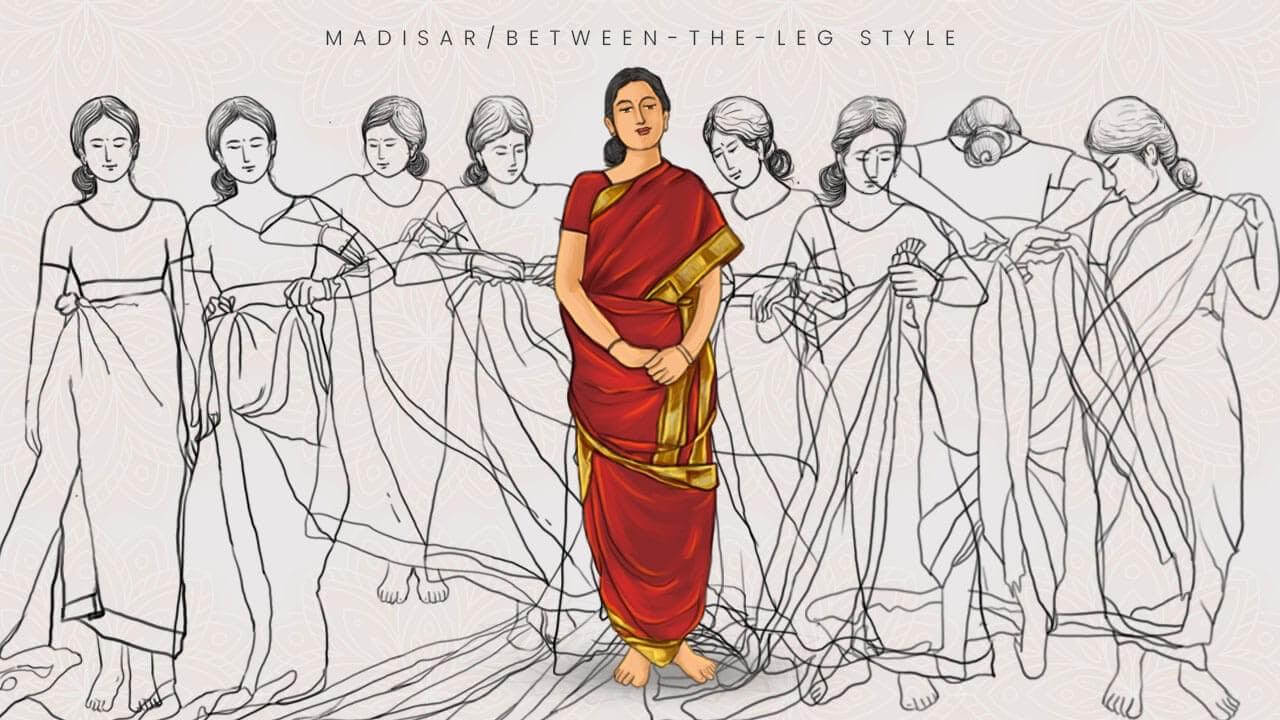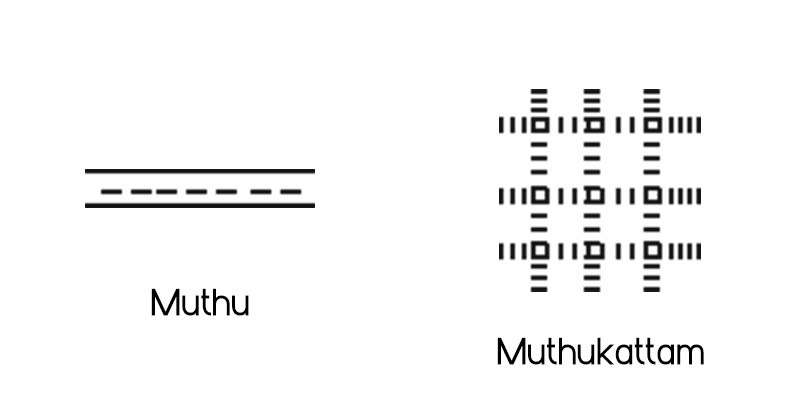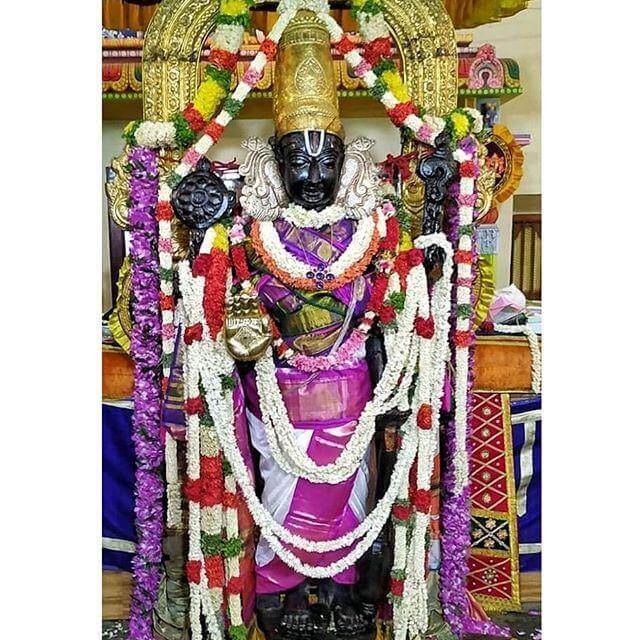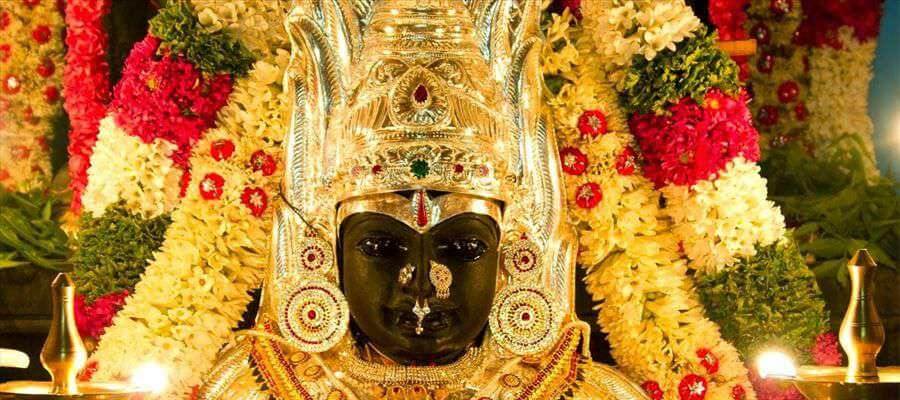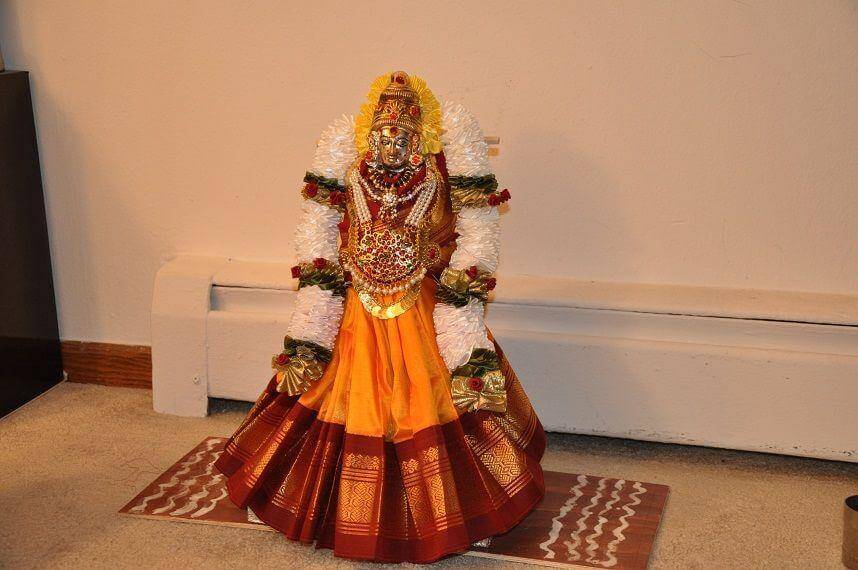Table of Contents:
- Introduction
- Why Should one go for Kanjivaram Saree?
- Touch and Feel
- Weight and Texture
- Colour and Fabric Tone
- Selecting the Ideal Border
- Where to Shop?
- Spotting the Authentic Sarees
- Types of Kanjivaram Sarees
- Different Draping Styles for A Beginner
- Caring for your saree
- Where to buy Kanjivaram sarees?
- Conclusion
Introduction:
Are you eagerly planning to shop for a Kanjivaram saree, but you are clueless about how to begin with? The good news is that you’ve landed in the right place! This guide will assist you from the moment you decide to bring home one of these masterpieces of traditional Indian artwork: These are renowned across the globe for their exquisite designs and the portrayal of beauty. This represents several styles of motif that contribute to a distinct cultural legacy.
Due to its historical significance—it was first produced over 400 years ago when the Pallava dynasty's king supported them—this silk is highly sought-after by designers. The Master Weavers from Andhra Pradesh, the Devangas and Saligars, continued many of these significant weaving periods. Every saree is hand-woven and takes approximately twenty-one days to complete. It employs a distinct process for producing zari work.
Why Should one go for Kanjivaram Saree?
Making the Kanjivaram saree your top choice is all about understanding its unique qualities.
Touch and Feel:
The first step towards the modelling of sarees is sensing. Genuine Kanjivaram sarees are also soft on the touch because of the pure silk used in making.
Weight and Texture:
These are slightly heavier and speak a lot about the quality of the silk used in these products.
Colour and Fabric Tone:
Focus on the shades of the fabric and its department store-like quality. Usually, it comes with bright colours that contrast with one another.
Selecting the Ideal Border:
The borders make it more beautiful. Select a design that complements both the occasion and your style.
Where to Shop?
Purchase from a store that is renowned for its genuine, if you are going to select an offline store or if you are doing it online ensure that the store you are choosing is genuine.
If you're looking to shop for it, here are some places where you can find these stunning pieces:
- Local Boutiques in Tamil Nadu: If one wishes to get a rich feel, it is here in Kanchipuram or other cities of Tamil Nadu like Chennai.
- Designer Boutiques: The modern Kanjivaram saree, referred to as the four-season, is what most designers nowadays wear. Going to a famous designer store will prepare you to receive more creativity.
- Online Shopping: To save time, you do not need to physically move around to buy it as they are available from prominent online shopping sites. If you prefer the convenience of shopping from home, consider visiting Panjavarnam. Our online store offers a curated collection of authentic Kanjivaram sarees, crafted with care and quality. Ensure you compare our offerings with other online dealers to confidently trust the quality of your purchase.
- Festivals and Exhibitions: These gatherings typically feature Kanjivaram weavers and vendors, providing direct access to authentic goods.
Spotting Authentic Kanjivaram Sarees
Fabric Quality:
Considering its appearance, it is said that the richness comes from the realistic usage of mulberry silk in their weaving.
Design Details:
To give a more luxurious appearance, seek several zari accessories, ideally in gold or silver.
Craftsmanship:
Kanjivaram sarees comprise pure mulberry silk which makes the look and feel very rich.
Types of Kanjivaram Sarees
- All-Purpose of Silk
- Wedding Sarees
- Bridal Silk Sarees
- Lightweight Sarees
- Colors
- Border Design
- Body Design
- Zari Work
- 9-Yard Sarees
Different Draping Styles for A Beginner:
Classic Nivi Style:
- Start by tucking it into the dress at your waist.
- Bring it to the area where you intend to wear it, go around your waist and fix it at the back.
- Drape the remaining fabric over your left shoulder.
- Adjust the front pleats and secure them with a pin.
South Indian Style:
- Tuck it into the dress at your waist with the pallu at the back.
- Create pleats at the front and secure them.
- Drape the pallu over the left shoulder, allowing it to hang gracefully.
Bengali Style:
- Tuck it into the waist slips and bring it to the back.
- Create pleats at the front and tuck them in.
- Drape the pallu over your left shoulder, letting it hang loosely.
Gujarati Style:
- Tuck it into the waist slips.
- It should be brought to the front, pleated, and tucked in.
- Drape the pallu over your right shoulder, letting it fall on your back.
Kindly be advised that to prolong the life of a Kanjivaram saree, specific care and wearing instructions must be followed.
Caring for your saree:
It is encouraged that a Kanjivaram saree user should always follow the washing or dry-cleaning instructions mentioned to maintain it.
Repository:
Store yours in a cotton bag that has been securely wrapped and zipped. Store it away from light in a dry or cool location.
Handling:
Avoid direct contact with perfumes or heavy makeup to prevent stains and damage to the fabric.
Where to buy Kanjivaram sarees?
The best place to purchase your Kanjivaram sarees is at Panjavarnam. Skilled weavers use strands of pure mulberry silk to create it. You can also explore a variety of online stores, retail shops, and boutiques to find the perfect Kanjivaram saree.
Conclusion:
You can choose, wear, and look after a gorgeous Kanjivaram saree effortlessly if you follow this guide. It’s time to acknowledge and cherish the vintage style and elegance that the clothing items radiate. It originates from the South Indian state of Tamil Nadu’s Kanchipuram, showcasing spiritual art that has been given a contemporary makeover in addition to cloth.


